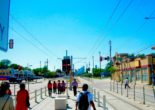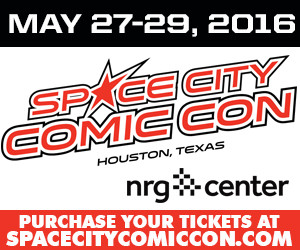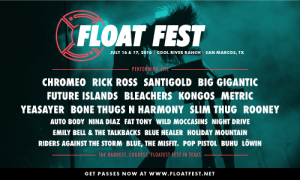Visual Vernacular: Artist Jacob Spacek
Jacob Spacek, Pseudoscience, 2024.
In this series, a focus of all things visual arts will be featured. Artist, curators, gallerists and other shape shifters of the local arts scene and beyond who use this medium as their language all contribute to what is Houston. First at the plate is an artist who mingles in both the creation and exhibition of visual art. Jacob Spacek works in 2-D and installation work who also happens to be the co-owner and visual arts director of Blue Orange Gallery. When you meet him, his boundless enthusiasm and love for the scene is immediately felt. Speak to him further and you learn the interesting reasoning behind his own art and those of others he exhibits.
In his latest exhibition, Pseudoscience — which opened on Wednesday at Next Wall Gallery — Spacek juxtaposes questions of science and faith as we know them in our culture. While viewing, one is shifting through the familiar images of the body and anatomy, but with abstract abruptions occurring inside. This push-pull of figurative painting with the abstract is intriguing, wondering what causes the beautiful disruption in the concrete. An example of such can be seen in one of the cornerstone pieces in the exhibition with five painted images of the human form broken down from muscular to skeletal but with boundless lines and strokes creating a primitive yet unworldly image.
FPH: How did you delve into the realm of visual art?
Jacob Spacek: Well, I have always drawn, painted and taken art classes, but I really started to take art seriously as a career when a former yoga instructor advised me to “get a degree that you love and worry about what to do with it afterwards”. I took that advice to heart and it worked out very well for me.
FPH: What was it like studying Studio Art in College?
Spacek: Studying art in college was amazing and lots of fun, but it was also a lot of hard work. I didn’t have to study as a normal degree, but I had to put a ton of time and energy into each project to really try and stand out. It lead to a lot of long nights in the studio.
Jacob Spacek, Internal Alchemy II, 2024.
FPH: Where did you find your style and your basis for your work? Has it changed much since that inception? If so, how?
Spacek: Heading into college, I knew I wanted to paint “kind of like Van Gogh,” but I really had no idea my work would end up like this. My work is influenced by masters Willem Dekooning, Jenny Saville, and Frank Auerbach, and many others. I also had the opportunity to work as a studio assistant for a month under British painter, Paul Wright, whose work and philosophies on painting played a large role in the development of my work.
FPH: Your latest exhibition, Pseudoscience, examines both science and faith. How does your work grapple with these two subjects? Are they treated as separate entities or do they intermingle?
Spacek: I think there are many similarities between science and faith. They are both ways of searching for answers to the hardest questions in life. They are not mutually exclusive, and, yes, they definitely intermingle. I think they should intermingle more. If top theoretical physicists and leaders from all religions could set aside their differences and truly work together, I think they could really help a lot of people. I hope my work sparks curiosity in the viewer and causes them to make some of these connections for themselves. I don’t know the answers, but I love to think about the questions.
FPH: What are the mediums for this exhibition? How do they serve as studies for the viewer?
Spacek: I typically work with oil paint, but for this show I have also used charcoal, chalk pastels, pen, graphite, crayon, plaster, acrylic paint, tempera paint, wire and anything else I could get my hands on at the time. I try to have a very specific reason for using each material in a piece. What I mean is not that the plaster has a particular meaning to me personally, but that it is the best material to create the texture of bone. In that way the work does become a study. The plaster becomes bone. The paint becomes muscle.
Jacob Spacek, Internal Alchemy III, 2024.
FPH: How do you see the human form through your brush? How do you divide the familiar with the abstract in this form?
Spacek: When I paint, I like to think of the human figure in the fourth dimension; moving through time. I want the paint to serve as a metaphor for the movement of energy, cells, blood, everything moving through our body.
FPH: You are also the co-owner and visual arts director at BlueOrange Contemporary Art Gallery. How has that experience been so far?
Spacek: Owning and operating a gallery has been great! I run the space with my sister, Megan, and my good friend Ken General. When we first thought of possibly opening a gallery, I was the reluctant one, but now I would never trade this experience for anything.
FPH: Do you think your role at BlueOrange Contemporary has altered your work? If so, how?
Spacek: My role there has definitely had a huge influence on my work. Aside from learning little tricks from every artist that comes through, my experience there has pushed me to work in different mediums, explore sculpture and installation and helped me to think of my work in terms of a whole show rather than individual pieces.
FPH: What is the best part of the Houston art scene?
Spacek: There are too many things to love about the Houston art scene, the museums, the diversity, the shear number of artists and art spaces (and the non-art cultural spaces), the highly active art supporters. It’s great! If I had to narrow it down to just one specific thing, I would pick the Menil. It was one of the first things I ever did in Houston and it really made a lasting impression on me. The permanent installations there are some of the greatest resources one can have access to as an artist and a viewer.
Pseudoscience will be on display through Saturday, June 4 at Next Wall Gallery (1717 Michigan). In order to view the exhibition, call BLUEorange at 713-527-0030 Tuesday through Saturday, 12 to 6 pm to schedule an appointment. The artist talk is slated for Saturday, May 28 at 1 pm at the gallery.












